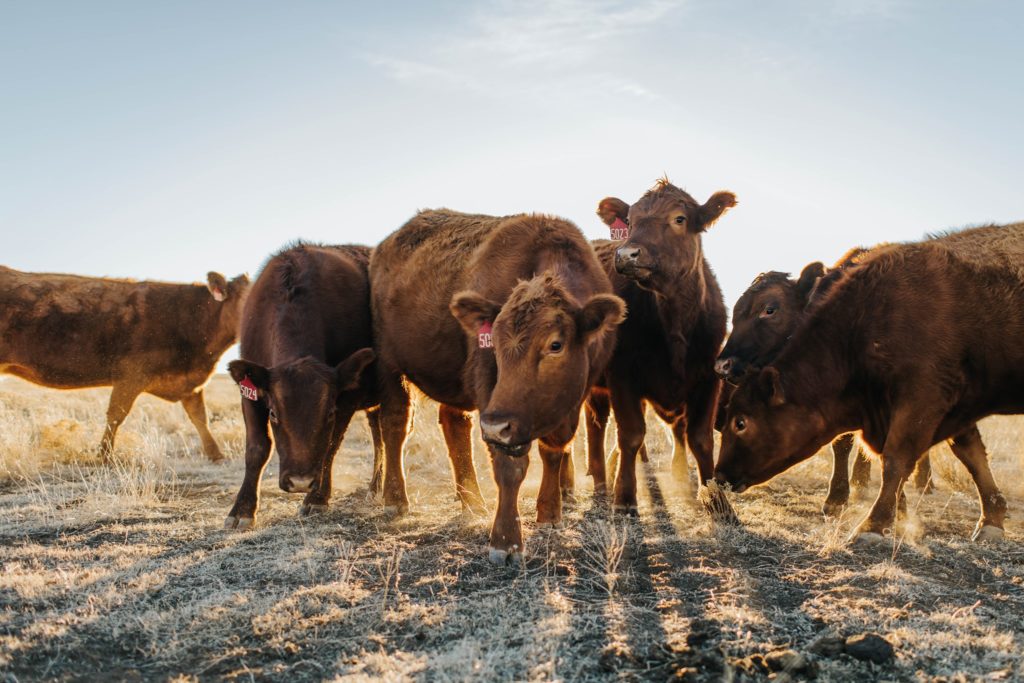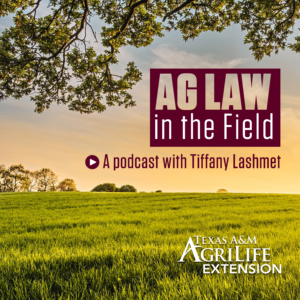
Texas Attorney General, Ken Paxton, issued an opinion in December on an interesting issue related to fence law. Do the statutory estray laws apply in both open and closed range counties? According to the Attorney General, he believes that Texas courts would rule that estray laws apply in all counties, whether open or closed range. [Read full Opinion here.]

Photo via Bell Road Beef
Legal Background
There are several legal issues important to understanding the AG’s Opinion.
Open versus closed range: There are generally two approaches to Texas fence law: open range and closed range. Open range provides that there is no obligation on the part of a livestock owner to prevent animals from running at large. Instead, the obligation is on neighboring landowners to fence other’s livestock out. In a closed range area, the opposite is true and a landowner does have a legal obligation to fence his or her animals in and to prevent them from running at large. Texas generally is an open range state, unless that status has been changed in a particular area by state statute, found in Chapter 143 of the Agriculture Code, which mandates that all State and US Highways are closed range, or local stock law election where voters elect to change an area from open to closed range. [For more information on the basics of fence law, click here and go to Chapter 6.]
Estray law: Texas estray law, found in Texas Agriculture Code Section 142, provides a procedure for dealing with stray livestock on the property of another. A landowner upon whose property another’s livestock are located must call the sheriff as soon as reasonably practical to report stray livestock. The sheriff then searches for the owner and may impound the animal if no owner is found within 5 days. The sheriff must then post notice of the animals in various ways and, eventually, if no owner is found, the sheriff is authorized to sell the animals at public auction. [To read more about the estray law, click here.]
Factual Background
Representative Poncho Nevarez requested an opinion from the Attorney General on whether the sheriff in Presidio County has the authority to enforce the statutory estray law in an open range area. Presidio County is an open-range area of Texas. In fact, under the Texas Agriculture Code, Presidio County is prohibited from passing a local stock law to change the standard in the county from open range to closed range, meaning that for cattle, Presidio County is statutorily required to be open range. Thus, as noted above, cattle owners are generally under no obligation to fence animals in or otherwise prevent them from running at large.
The Presidio County Sheriff received conflicting advice about whether the estray statutes apply in an open range county. According to Representative Nevarez’ request, the Presidio County Sheriff believes it is the responsibility of the sheriff’s office to handle stray livestock by virtue the Texas estray law. Conversely, the County Attorney has issued a legal opinion that the estray laws do not apply in an open range county. Judge Dan Mills, an advisor for the sheriff’s association of Texas, agreed with the County Attorney. John Fowlkes, the former County Attorney, interpreted the law in the same way as the Sheriff’s office and believes that the estray laws do apply in an open range county. It was this situation that led to Representative Nevarez submitting his request for an opinion from Attorney General Paxton.
AG’s Opinion
First, keep in mind that an AG Opinion is not binding law. A Texas court could look to this as persuasive in making an eventual ruling in a case, but courts are not required to defer to these opinions. The value of an AG opinion, however, lies in the fact that it is a way to obtain an answer to a legal question without filing a lawsuit and/or without having a live controversy. While courts are bound to decide the cases before them based on the specific facts of that case, an Attorney General can speculate on how the law may apply in hypothetical situations or hypothetical cases.
Mr. Paxton’s Opinion contains an instructive discussion on Texas fence law. The AG outlines the history of Texas fence law, noting the open range roots of the state and explaining how state statute and local stock laws have changed much of the state to closed range. Additionally, the AG reviewed the history of the estray statute, which “dates back to the earliest days of the Republic.” The estray procedure allows a landowner to contact the sheriff if an owner discovers an estray animal on his or her property. This provision applies whether the owner of the animal is known or unknown.
Next, the Opinion turns to the analysis of the applicability of the estray law in an open range county. First, notes the AG, the test of the estray law does not distinguish between property located in an open range county or a closed range county. “The estray statutes cannot be construed to contain an exception for open-range areas when such an exception cannot be found in the statutes’ language.” Second, the AG noted that the estray laws pre-dated the statutory provisions allowing for areas to be changed to closed range, indicating that estray laws were certainly applicable in open range areas for decades. Third, the statutes allowing for local stock laws and providing that State and US highways are closed range do not address the estray laws. This, reasons the Attorney General, indicates that the closed range statues do not restrict the application of the estray laws to only those areas covered by the closed range statutes. “While the venerable open-range common law controls where it applies, it cannot override the Legislature’s statutory regulation of estrays.” Thus, the AG concluded that “a county sheriff has the authority and responsibility to enforce the estray laws whether the county has adopted a local-option stock law or remains and open-range area.”
Take Aways
First, this is just another in a long list of reminders from this blog that Texas fence law is not always straight-forward. Although the general rule is that Texas is open range, there are a number of statutory provisions that can change areas to closed range and additional provisions, such as the estray law, that apply to fence law issues as well.
Second, for open range counties, this opinion addresses a practical question–what authority do the sheriffs have to act under the estray laws in the county? Numerous counties have struggled with this issue and this opinion indicates that, at least as the AG interprets the law, they do have the authority to act if animals are on the property of another even though the animal owner has no obligation to prevent the animals from running at large.
Third, from a practical standpoint, the result of this Opinion may be a bit difficult to apply. In an open range county, where an animal owner has no obligation to fence his or her animal in, if the neighbor can simply call the sheriff to come remove the animal under the estray law each time the animal enters the neighbor’s property, does that essentially treat the animal owner as though the area were closed range? Would there be a distinction on what the sheriff might do if the neighboring landowner had a fence and the animals continued to get in through that fence, versus if the neighboring landowner had no fence despite the neighbor’s obligation to fence animals out? These questions remain unanswered. It will be interesting to see if this issue is ever brought before a court under various factual circumstances.












